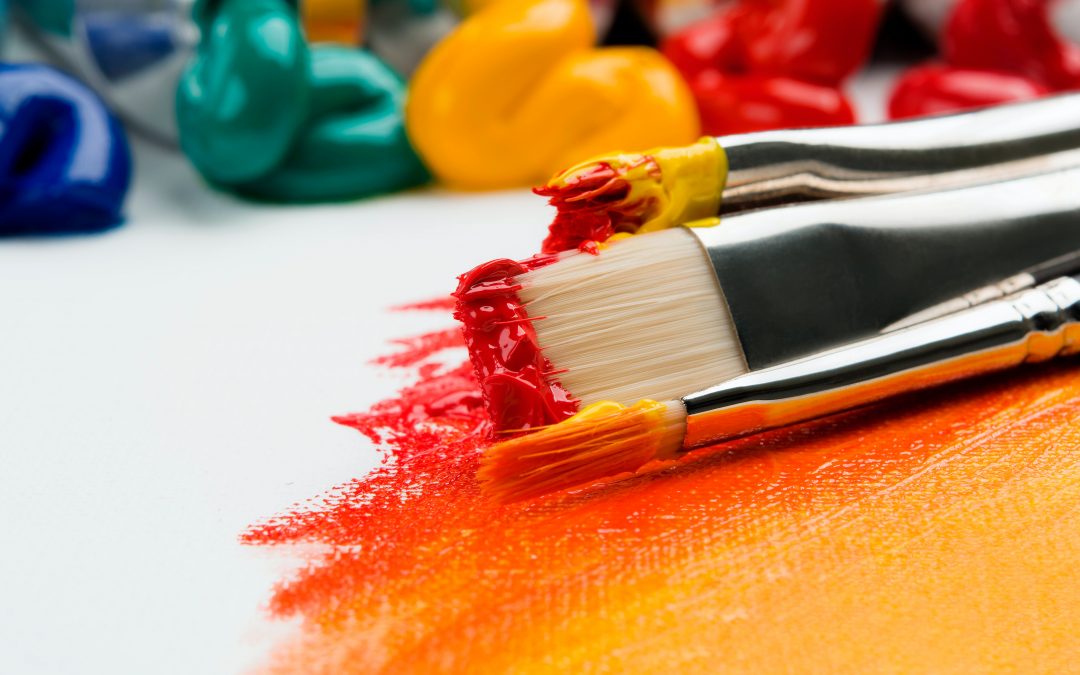An Important Lesson on the
Integrity of Art
by Courtney Cerniglia

In my first college studio art class, there was a project due that I wasn’t overly enthused about. I procrastinated; and in the evening before deadline, I sat on my dorm room floor and painted something. I used a basic pallet of primary colors in gouache, making a simple geometric collage. My lines were clean, and I created something within the parameters assigned. Voila! I thought my work was done.
On the due date, I walked into class unphased about critique. When my professor came my way, she took a glance at my painting and turned to me with a concerned look on her face. “This isn’t you,” she said. “Attempt the assignment again, and this time, don’t rush.”
I was shocked. How could she tell what was “me” or not? I painted it! And heck, I spent four hours on my floor the night before trying to finish the stupid assignment – I worked hard! She’s wrong!
After my initial grumpiness, I stepped back from my easel and really looked at my work. It was flat. And, frankly, not me. My professor was right. She called my bluff, and in turn, taught me a valuable lesson about art’s integrity.
I’m sure you can remember a time where you’ve looked at a piece of art and thought, “That’s art? I could do that!” Many famous artists have heard this critique. So what makes art art? Everyone defines art differently, which is something I enjoy exploring. I’ve found there’s an inherent truth that emits from a piece of art – from the most complex drawings to the simplest clay formations. If it’s allowing the artist to express an emotion, idea, or form of their truth, it is usually considered art.
My professor made this point when she called me out for my lack of effort and procrastination. She refused to call my work art – and while it may have insulted me at the time, she protected the coveted definition of art from my lazy attempt at completing a project.
When we refuse to label work as art, it is a choice that protects the integrity of the work we do label as art. Now, this is tricky territory, as the art world also counters the idea that there is such a thing as good and bad art. I don’t think these two concepts are the same. As my professor showed, she didn’t reject my art because it was bad to her. She knew that there was no emotional investment by me. It lacked any emotion or truth and resulted in rejection. It wasn’t bad art – because it simply wasn’t art to begin with!
I think the same philosophy is applied to a child’s crayon drawing. We don’t say, “Oh dear, that’s not art!” Often, we celebrate it and hang it on the fridge! In the same way we can celebrate a child’s artistic talent, we can celebrate artists and their expression through their work.
I suppose after having gone through this critique experience in college, I can say there is a clearer line for me to define what is and is not art, versus what is bad and good art. Art is subjective – our own opinions of it being good or bad lie within the viewer but do not determine if the work is art. Art, on the contrary, is defined by the artist. It encapsulates the ideation, process, and final emission to the medium.
This is why I love exploring artists of all mediums and crafts and finding those truly excited by their passions. Because at least to me, they are artists and their work is art.



